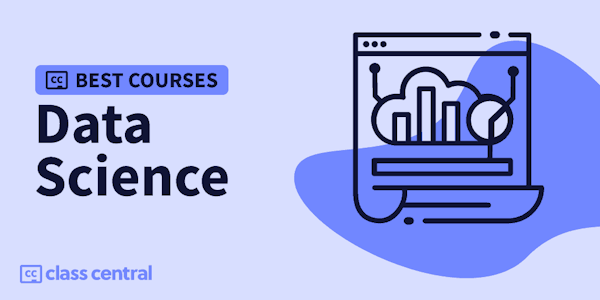What you'll learn:
- Understand Microsoft Fabric, what it is, how it works and its various components
- Learn how to explore, create, assign and configure workspaces
- Discover the principles of data engineering in Microsoft Fabric, including Lakehouse and Delta Lake
- Explore the application of OneLake on Fabric
- Learn about data loading and ingestion options in the Fabric enviroment
- Understand the connection of Power BI and Fabric in data visualization
- Discover how to use data factory to create and execute data pipelines in Fabric
- Find out the uses of Fabric within the domains of data science and data engineering
- Gain comprehensive understanding of performance management, SQL, and KQL, and learn how to use KSQL Queryset, KSQL database, and KSQLMagic for data analysis.
- Explore how to manage access control, governance, and monitoring in the Fabric environment
Are you ready to immerse yourself in the cutting-edge world of Microsoft Fabric and revolutionize your data-professional and data engineering skills? This in-depth course will take you on an exploration of the power of Microsoft Fabric, Microsoft's cutting-edge data tools and analytics platform. With over 9 hours of engaging content, you will obtain a solid grasp of Microsoft Fabric's capabilities and how it can assist you with your data journey.
In this comprehensive Microsoft Fabric course, you will learn about important topics like Lakehouse versus warehouse and the concept of workspaces. Learn how to set up and configure workspace access, how to use OneLake and Delta Lake, and how to apply authentication and authorization techniques for data protection. Improve your knowledge of shortcuts, monitoring hubs, and data hubs. Learn about Spark integration, different ingest strategies for efficient data loading, and key topics like SQL vs. KQL and performance management.
Whether you're a seasoned data expert or just starting out, this course will prepare you to thrive in the world of data.
What is this course all about?
The main goal of this course is to offer a comprehensive guide to Microsoft Fabric and showcase its diverse applications across multiple domains in the data field. By delving into data engineering, data science, and data analytics, you will develop a holistic comprehension of how Microsoft Fabric can be effectively utilized in the world of data.
What is Microsoft Fabric?
Microsoft Fabric is an all-in-one cloud-based analytics platform that includes data migration, data lakes, data engineering, data integration, data science, real-time analytics, and business intelligence. It offers a user-friendly, cloud SaaS interface that makes it accessible even to people with limited data analytics knowledge. All analytics components are available on a single platform, easing data pipeline management, model deployment, and insight sharing.
Who are the instructors for this course?
Sawyer Nyquist
A data professional from West Michigan, USA, holding the position of Sr. Data Engineering Consultant at Microsoft. He specializes in business intelligence, data engineering, data warehousing, and data platform architecture. Possessing cloud data certifications in data engineering, Apache Spark, and business intelligence, he has collaborated with numerous companies to strategize and deploy data platforms, analytics, and technology and to foster growth.
Hitesh Govind
Hitesh is a cloud solutions architect from Southern California, USA, with a wide expertise in database administration and enterprise architecture. He is also a published author who is passionate about mentoring teenagers and an entrepreneur who believes in the power of technology to tackle real-world business challenges. Hitesh also has expert-level certification in Azure Solutions Architecture, as well as Data Engineer and Power Platform certifications.
Why learn Microsoft Fabric?
Role-Tailored Tools: Microsoft Fabric provides specialized tools for different roles involved in the data analytics process, catering to the demands of data professionals, analysts, and engineers.
Unified Platform: Microsoft Fabric unifies diverse components of an analytics solution into a single platform.
Cloud-Based Accessibility: As a cloud-based platform, Fabric allows users to access it from anywhere, making it ideal for organizations with distributed teams or those requiring quick scalability for their analytics capabilities.
AI-Powered Capabilities: Microsoft Fabric incorporates features like Copilot, which aids in efficient code writing, and Data Activator, which provides real-time data monitoring, enhancing data analysis and decision-making.
Adaptation to Current Trends and Upskilling: Embracing Microsoft Fabric allows individuals and organizations to stay current with emerging trends in data analytics, providing opportunities for continuous learning and skill enhancement to remain competitive in the data realm.
Why choose this course?
Learn from Experts: The course is taught by industry experts who have extensive knowledge and experience in the fields of data science, data analytics, and data engineering.
Comprehensive Coverage: This course provides a complete guide covering the areas of data engineering, data analytics, and data science, making it a useful and well-rounded resource for data professionals.
Practical Approach: Going beyond theoretical explanations, we provide practical examples, allowing students to practice alongside the instructor, which allows the learners to apply the concepts in real-world scenarios, enhancing their learning experience.
Instructor support: Whether you're stuck on a particular subject, seeking clarification, or looking for expert insights, our instructors are committed to helping you every step of the way.
Course Overview:
Sections 1: Learn about the course objectives, the instructors, and how to align analytical solutions with the needs of the clients.
Section 2: An introduction to Microsoft Fabric along with workspace set-up and configuration.
Sections 3 to 5: An overview of data engineering in Fabric, covering OneLake, Delta Lake, shortcuts, authentication process, and monitoring Spark jobs.
Section 6: Introduction to data warehouse in Fabric covering data ingestion, data loading, performance management, etc.
Section 7: Learn real-time analytics including SQL and KQL, monitoring queries and data, KSQLmagic along with Spark integration.
Sections 8 and 9: Understanding data factory, data flows, pipelines and workspace set-up.
Section 10: Exploring the integration of Power BI with Fabric.
Section 11: Introduction to data science process, model management and practical exercises.
Section 12: Covers the fundamentals of data management including access control, governance and security, and monitoring.



